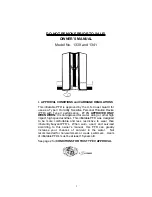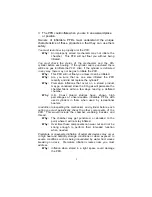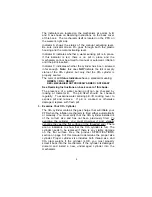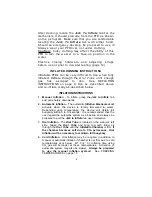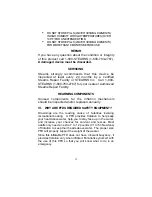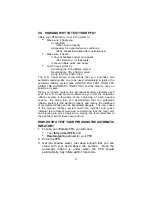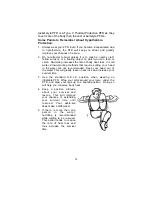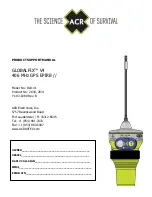
3
3. The PFD could inflate when you are in an awkward place
or position.
Owners of inflatable PFDs must understand the unique
characteristics of these products so that they can use them
safely.
You must learn how to properly arm the PFD.
Why:
An improperly armed mechanism may not inflate the
chamber. This PFD will not float you without being
inflated.
You must check the status of the mechanism and the CO
2
cylinder before each outing. If the cylinder cap is punctured there
will be no gas to inflate the PFD. Also, if the cylinder is deformed
in any way, there may not be gas to inflate the PFD.
Why:
This PFD will not float you unless it can be inflated.
Why:
Are you sure that no one else inflated the PFD
recently and did not replace the cylinder?
Why:
Premature inflations that occur on a stored product
may go unnoticed since the CO
2
gas will permeate the
chamber fabric within a few days, leaving a deflated
chamber.
Why:
U.S. Coast Guard studies have shown high
percentages of unserviceable inflatable PFDs with
used cylinders in them when used by recreational
boaters.
In addition to inspecting the mechanism and cylinder before each
outing you must periodically check the other components of the
PFD. This would include the chamber, webbing, buckles and
thread.
Why:
The chamber may get punctured, or abraded to the
point where it will not stay inflated.
Why:
Over time these components can wear out and not be
strong enough to perform their intended function
when needed.
Premature or unexpected inflation of automatic devices may occur
in high heat and humidity storage conditions or when exposed to
severe conditions such as being innundated by water from waves
breaking on deck. Premature inflation creates risks you must
address.
Why:
Inflation when stored in a tight space could damage
the PFD.

